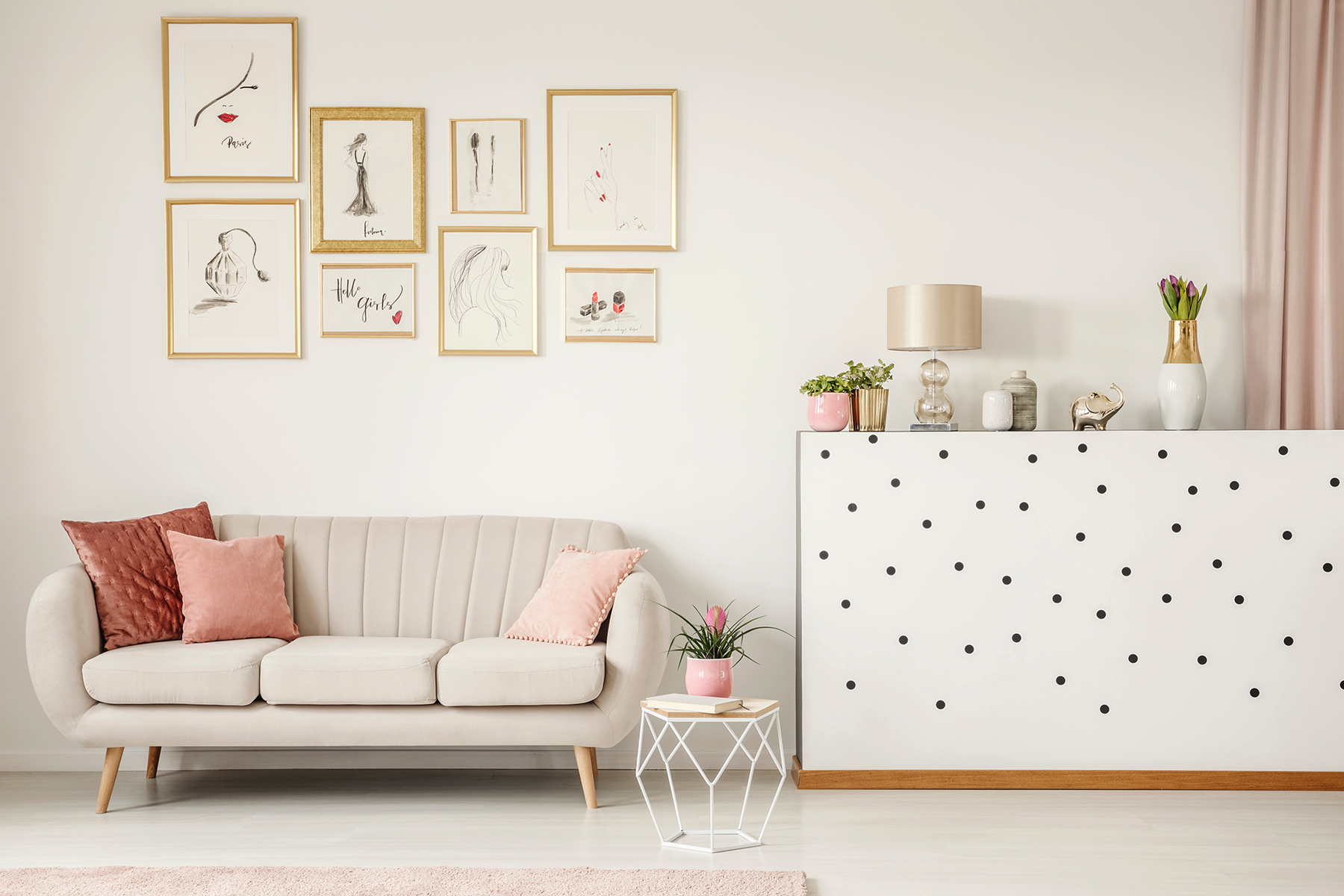For the past 50 years, Long & Foster Real Estate has been dedicated to helping clients on their journeys home.
Each property our team has helped to buy or sell is unique and individual, but it is the décor and furniture that creates the personality of the home, reflecting on the people who live there.
Here is a quick snapshot of what furniture styles were popular in the decades since our founding.
The 1960s
The 1960s were a time of experimentation within the home. Bright colors and floral patterns dominated interior design, and people were not afraid to mix different patterns and textures. Psychedelic style involved contrasting colors and patterns, and often included elements like lava lamps and Indian prints, which were patterns full of intricate, overlapping shapes and bursts of bright and vibrant colors. Shag carpets and custom-made wood furniture became very popular during the 1960s, and it was common to see them in several rooms around the house.
The 1970s
Due to economic troubles of the 1970s, there was less emphasis on experimentation and more focus on comfort. People moved away from bright colors in favor of warmer shades, like brown, orange and avocado green. Velvet couches and tulip chairs were common within households, and living rooms evolved to include conversation pits: sunken areas where couches and chairs were set up to create an isolated and designated area for socializing and entertaining.
The 1980s
The 1980s were about matching. People desired cleaner and more polished looks that resembled catalogues, TV shows and even hotel rooms; comfort was abandoned and replaced for style. Couches were larger, overstuffed, and often placed in front of oversized entertainment systems. Pastels and soft colors took over the color palette, adding to the preppy and refined look that the 1980s strived for; ferns and heavy wooden furniture added to the pale and solid color schemes.
The 1990s
The 1990s was a time of change and evolution. The earlier part of the decade focused on sleek, modern designs and resin furniture, whereas the second half of the decade focused on floral patterns and pinewood furniture. Overall, there was an increased need for functional and practical furniture, rather than just decorative pieces; furniture that had more than one function, like coffee tables with storage space, satisfied the need for practicality.
The 2000s
With the turn of the century, people moved their interest toward more individualized and unique approaches to decorating. People filled their homes with bright, bold and complex designs, leaving the conformity of the 1980s behind for good. Smart homes rose in popularity, and technology and furniture overlapped through designs as simple as glowing LED chairs to more complex integrated smart home systems—everything was made to make life easier for the homeowner. The environment became more of a concern, resulting in furniture made from recycled materials like glass or bamboo.
The 2010s
The 2010s evolved into an era of minimalism. Simplicity replaced the bold patterns, and whites and other neutrals took over the previous brighter color scheme. Vintage items became popular again. The focus on personalization within the home remains, but it is simpler and toned down from the previous decade to help eliminate clutter and create more space.
Décor and furniture has evolved from elaborate and bright patterns to neutral palettes and minimalism, each trend in between is unique and distinguished from the others. Furniture helps makes homes more welcoming and complete, however there are so many ways to decorate homes and so many different eras of décor from which to draw inspiration.
